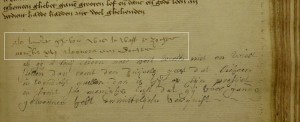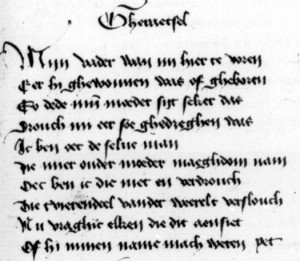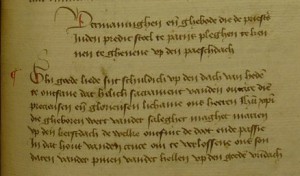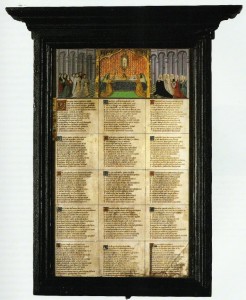The fifth story of the Geraardsbergen Manuscript has been suggested implicitly by the Dutch codicologist Hans Kienhorst in the critical edition of the texts.
When the scribe of the Geraardsbergen Manuscript had finished copying the texts, he checked his work to make sure he had not made any mistakes. Unfortunately, he had made one: in text 57 he had missed out two rhyming lines. Because the exemplar (?) from which he had copied the text was apparently still available, he could easily add these two lines in between the second and third lines on fol. 123r. The script he used to add these lines, however, is written more hastily than the main text, and is therefore hardly legible. This may be an indication that he did not copy the book for someone else, but for his own private use.
A second indication that the scribe was the first owner of the codex can be found in the first codicological unit (?) on fol. 101r. Here, in the blank space at the end of the second chronicle, the same hand occurs, mentioning the birth of his daughter Alyonore on a 16th of November. This type of addition is usually only written by the owner of a book (nobody would write that he has a daughter in someone else’s book…).

Brussels – KBR – 837-45, fol. 101r: Inscription by the scribe about his daughter (by courtesy of KBR Brussels)
We can sketch out the character of this scribe given that he added text in both of the units he copied and seems to have owned them both. He must have been interested in history, since he copied two chronicles in the first unit and The nine worthies in the second. He was married and had at least one daughter – to whom he could tell the riddles when she was older. And maybe he had travelled when he was younger, on pilgrimages and for business purposes?
Finding Alyonore may help us discover the real story of the Geraardsbergen Manuscript.





